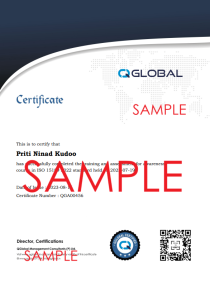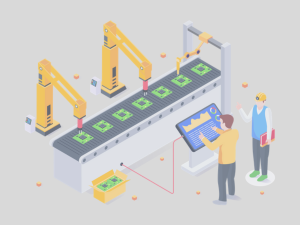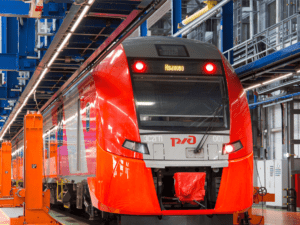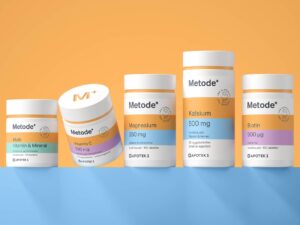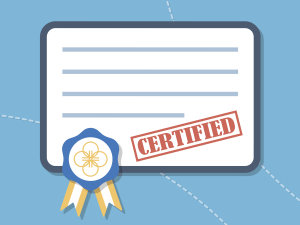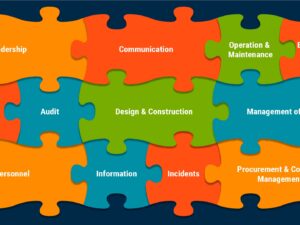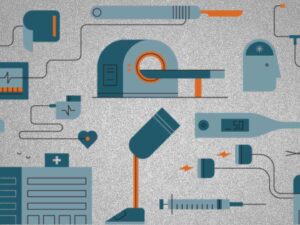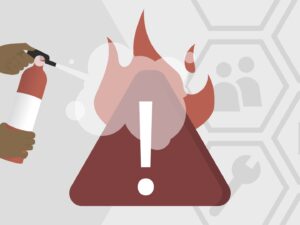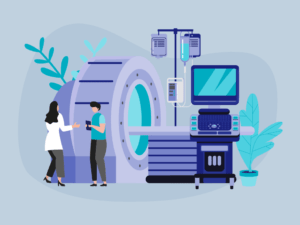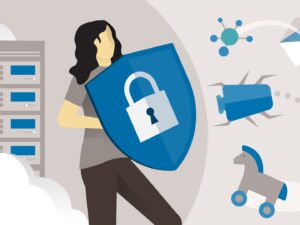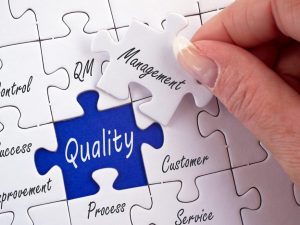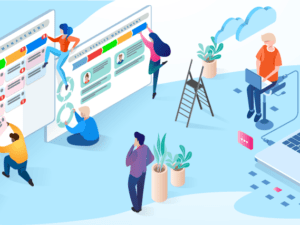ISO 22716 Cosmetics — Good Manufacturing Practices (GMP) - Lead Auditor Course
- Description
- Curriculum

ISO 22716 2007 guidelines are intended to provide guidance regarding Good Manufacturing Practices for cosmetic products. ISO 22716 2007 guidelines have been prepared for consideration by the cosmetic industry and take into account the specific needs of this sector. ISO 22716 2007 guidelines offer organizational and practical advice on the management of the human, technical and administrative factors affecting product quality. ISO 22716 2007 guidelines have been written to allow them to be used following the flow of products from receipt to shipment. Additionally, in order to clarify the way this document reaches its objectives, a ‘principle’ is added to each major section. Good Manufacturing Practices constitute the practical development of the quality assurance concept through the description of the plant activities that are based on sound scientific judgement and risk assessments. The objective of these GMP guidelines is to define the activities that enable you to obtain a product that meets defined characteristics. ISO 22716 2007 Standard gives guidelines for the production, control, storage and shipment of cosmetic products. ISO 22716 2007 guidelines cover the quality aspects of the product, but as a whole do not cover safety aspects for the personnel engaged in the plant, nor do they cover aspects of protection of the environment. Safety and environmental aspects are inherent responsibilities of the company and could be governed by local legislation and regulation. ISO 22716 2007 guidelines are not applicable to research and development activities and distribution of finished products. ISO 22716 lead auditor training course will help you learn how to initiate an audit, prepare and conduct audit activities, compile and distribute audit reports and complete follow-up activities. On successful completion of this course, you will be able to optimize your auditing skills with the internationally recognized ISO 22716 requirements and boost your audit capabilities. Also gain confidence in planning and performing an effective audit, as well as reporting and taking corrective action where necessary. This ISO 22716 lead auditor course will help you develop the necessary skills to assess and report on the conformance and implementation of processes based on ISO 22716.
Who Should Attend?
- Anyone involved in the planning, implementing, maintaining, supervising or auditing of an ISO 22716 or a quality management system
- Existing internal auditors
- Employees of any organisation who wish to audit their organisation’s quality management system
- Trainers, managers or consultants seeking to master good manufacturing practices or quality management system audit process
- Personnel who wish to pursue career in auditing GMP
- Expert advisors in quality management or similar practices.
Key Benefits
- Develop the career as a GMP lead auditor
- Become ISO 22716 lead auditor
- Gain the skills to plan, conduct, report and follow up first, second and third party audits in accordance with ISO 19011 standard
- Learn skills to lead an audit team
- Identify the aims and benefits of GMP audit
- Interpret ISO 22716 requirements for audit application
- Acknowledge the correlation between ISO 22716 requirements and other standards and regulatory frameworks
- Learn the latest ISO 22716 lead auditor techniques
- Consolidate your expertise with the latest developments and contribute to the continuous improvement of the business
- Fill gaps in your professional knowledge
Learning & Evaluation Method
This is a live and interactive course. Once you purchase the course, our team will contact you to plan the training. No matter where you are located, we schedule the classes based on your convenience and time zone. You can plan to attend the training in sessions of 4 or 8 hr duration, based on how much time you can spend in a day.
Certification
There are increasing numbers of organizations, who prefer candidates those who have completed management system trainings from a recognized institution. Certification demonstrates your commitment to superior professionalism, upholding industry standards, and continued learning. These merits can help boost your professional credibility and prestige within your own network, in your organisation, with your current clients, and when pursuing new business opportunities. After the successful completion of the course and final exam, you will be awarded with a certificate of completion issued by QGlobal. Your credentials will be made available in the global online directory and can be verified by anyone searching with the certificate number. Without doubt we can say that our training courses are well recognized and sought after by organizations across various geographies.
Buy for group Are you planning to buy this course for a group? We have the best prices for you! Select ‘Buy for Group’ option and add to the cart. You will get a discount of 60 – 75% for a group of up to 10 participants. To make a group purchase, create your group name and add individual emails of up to 10 participants. Each participant will get the access to the course materials, exam and the certificate. We will arrange one live-online session for the entire group.
Total: 206 Courses View all
Total: 206 Courses View all
-
1Introduction to standards and certification
- Purpose of standardization
- Benefits of certification
-
2ISO 22716 Personnel
ISO 22716 Clause 3 Personnel
ISO 22716 Clause 3.1 Principle
ISO 22716 Clause 3.2 Organization
ISO 22716 Clause 3.2.1 Organization chart
ISO 22716 Clause 3.3 Key responsibilities
ISO 22716 Clause 3.3.1 Management responsibilities
ISO 22716 Clause 3.3.2 Responsibilities of personnel
ISO 22716 Clause 3.4 Training
ISO 22716 Clause 3.4.1 Training and skills
ISO 22716 Clause 3.4.2 Training and Good Manufacturing Practices
ISO 22716 Clause 3.4.3 Newly recruited personnel
ISO 22716 Clause 3.4.4 Personnel training evaluations
ISO 22716 Clause 3.5 Personnel hygiene and health
ISO 22716 Clause 3.5.1 Personnel hygiene
ISO 22716 Clause 3.5.2 Personnel health
ISO 22716 Clause 3.6 Visitors and untrained personnel
-
3ISO 22716 Premises
ISO 22716 Clause 4 Premises
ISO 22716 Clause 4.1 Principle
ISO 22716 Clause 4.2 Types of area
ISO 22716 Clause 4.3 Space
ISO 22716 Clause 4.4 Flow
ISO 22716 Clause 4.5 Floors, walls, ceilings, windows
ISO 22716 Clause 4.6 Washing and toilet facilities
ISO 22716 Clause 4.7 Lighting
ISO 22716 Clause 4.8 Ventilation
ISO 22716 Clause 4.9 Pipework, drains and ducts
ISO 22716 Clause 4.10 Cleaning and sanitization
ISO 22716 Clause 4.11 Maintenance
ISO 22716 Clause 4.12 Consumables
ISO 22716 Clause 4.13 Pest control
-
4ISO 22716 Equipment
ISO 22716 Clause 5 Equipment
ISO 22716 Clause 5.1 Principle
ISO 22716 Clause 5.2 Equipment design
ISO 22716 Clause 5.3 Installation
ISO 22716 Clause 5.4 Calibration
ISO 22716 Clause 5.5 Cleaning and sanitization
ISO 22716 Clause 5.6 Maintenance
ISO 22716 Clause 5.7 Consumables
ISO 22716 Clause 5.8 Authorizations
ISO 22716 Clause 5.9 Back-up systems
-
5ISO 22716 Raw materials and packaging materials
ISO 22716 Clause 6 Raw materials and packaging materials
ISO 22716 Clause 6.1 Principle
ISO 22716 Clause 6.2 Purchasing
ISO 22716 Clause 6.3 Receipt
ISO 22716 Clause 6.4 Identification and status
ISO 22716 Clause 6.5 Release
ISO 22716 Clause 6.6 Storage
ISO 22716 Clause 6.7 Re-evaluation
ISO 22716 Clause 6.8 Quality of water used in production
-
6ISO 22716 Production
ISO 22716 Clause 7 Production
ISO 22716 Clause 7.1 Principle
ISO 22716 Clause 7.2 Manufacturing operations
ISO 22716 Clause 7.2.1 Availability of relevant documents
ISO 22716 Clause 7.2 Manufacturing operations
ISO 22716 Clause 7.2.1 Availability of relevant documents
ISO 22716 Clause 7.2.3 Assignment of a batch number
ISO 22716 Clause 7.2.4 Identification of in-process operations
ISO 22716 Clause 7.2.5 In-process control
ISO 22716 Clause 7.2.6 Bulk product storage
ISO 22716 Clause 7.2.7 Re-stocking raw materials
ISO 22716 Clause 7.3 Packaging operations
ISO 22716 Clause 7.3.1 Availability of relevant documents
ISO 22716 Clause 7.3.2 Start-up checks
ISO 22716 Clause 7.3.3 Assignment of batch number
ISO 22716 Clause 7.3.4 Packaging line identification
ISO 22716 Clause 7.3.5 Checks of on-line control equipment
ISO 22716 Clause 7.3.6 In-process control
ISO 22716 Clause 7.3.7 Re-stocking of packaging materials
ISO 22716 Clause 7.3.8 Identification and handling of work-in-process
-
7ISO 22716 Finished products
ISO 22716 Clause 8 Finished products
ISO 22716 Clause 8.1 Principle
ISO 22716 Clause 8.2 Release
ISO 22716 Clause 8.3 Storage
ISO 22716 Clause 8.4 Shipment
ISO 22716 Clause 8.5 Returns
-
8ISO 22716 Quality control laboratory
ISO 22716 Clause 9 Quality control laboratory
ISO 22716 Clause 9.1 Principle
ISO 22716 Clause 9.2 Test methods
ISO 22716 Clause 9.3 Acceptance criteria
ISO 22716 Clause 9.4 Results
ISO 22716 Clause 9.5 Out-of-specification results
ISO 22716 Clause 9.6 Reagents, solutions, reference standards, culture media
ISO 22716 Clause 9.7 Sampling
ISO 22716 Clause 9.8 Retain sample
-
9LI 01 Building the team
-
10LI 02 Conducting gap analysis
-
11LI 03 Preparing implementation plan
-
12LI 04 Creating awareness
-
13LI 05 Conducting training
-
14LI 06 Procuring documents
-
15LI 07 Creating management system manual
-
16LI 08 Creating policies and procedures
-
17LI 09 Creating forms and templates
-
18LI 10 Planning for certification
-
19LI 11 Implementation methodology
- Building the culture
- Plan-Do-Check-Act
-
20LI 12 Role of leadership in implementing the management system
- Leadership concepts
- Role of leaders in implementing the management system
- 12 Characteristics of team leaders and managers
-
21LI 13 Employee motivation and involvement
- Employee wants
- Achieving a motivated workforce
-
22LI 14 Obstacles in implementing the management system
- Inability to manage the change
- No planned review of the system
- Inadequate planning
- Not aligning the goals and matrices
- Poor commitment from top management
- Differences between departments and individuals
- Lack of awareness and not providing continuous training
- Poor documentation
- Inadequate monitoring, measuring and analysis of data and results
- Not paying attention to internal and external customers
- Failure to continually improve
- Failure to motivate and empower employees
-
23Introduction to ISO 19011 2018 Guidelines for auditing management systems
- Scope
- Normative references
- Terms and definitions
-
24ISO 19011 Principles of auditing
-
25ISO 19011 Managing an audit program
- Establishing audit programme objectives
- Determining and evaluating audit programme risks and opportunities
- Establishing the audit programme
- Roles and responsibilities of the individual(s) managing the audit programme
- Competence of individual(s) managing audit programme
- Establishing extent of audit programme
- Determining audit programme resources
- Implementing audit programme
- Defining the objectives, scope and criteria for an individual audit
- Selecting and determining audit methods
- Selecting audit team members
- Assigning responsibility for an individual audit to the audit team leader
- Managing audit programme results
- Managing and maintaining audit programme records
- Monitoring audit programme
- Reviewing and improving audit programme
-
26ISO 19011 Conducting an audit
- Initiating audit
- Establishing contact with auditee
- Determining feasibility of audit
- Preparing audit activities
- Performing review of documented information
- Audit planning
- Assigning work to audit team
- Preparing documented information for audit
- Conducting audit activities
- Assigning roles and responsibilities of guides and observers
- Conducting opening meeting
- Communicating during audit
- Audit information availability and access
- Reviewing documented information while conducting audit
- Collecting and verifying information
- Generating audit findings
- Determining audit conclusions
- Conducting closing meeting
- Preparing and distributing audit report
- Preparing audit report
- Distributing audit report
- Completing audit
- Conducting audit follow-up
-
27ISO 19011 Competence and evaluation of auditors
- Determining auditor competence
- Personal behavior
- Knowledge and skills
- Achieving auditor competence
- Achieving audit team leader competence
- Establishing auditor evaluation criteria
- Selecting appropriate auditor evaluation method
- Conducting auditor evaluation
- Maintaining and improving auditor competence

